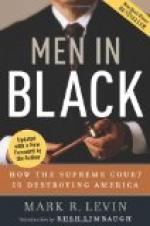A jury is supposed to be advantageous to the defendant in a criminal action and to the plaintiff in a civil action.
“One judge is better than twelve,” says the advocate of the non-jury system. “Law is a technical thing and you can not put a technical case plainly enough so that twelve men could thoroughly understand it.”
A discussion of the jury system is not in place. The jurymen have already been summoned and are in court and until the structure of the law is changed they will remain. They are ready to try any case that may come before them. The judge feels a sense of relief at not having to pass upon the facts. The law being laid down, all that remains for him to do is to see that the facts are fairly and plainly presented to the jury, that both sides conduct the case in a reasonable manner and that the trial be as open-minded as possible. The anxious attitude of mind toward the jury is that of the parties who are to be judged, the lawyers and their clients.
The jury do not become very excited over the wrongs of one side or the other. They certainly do not enjoy the trial or look upon it as an example of a good fight although under the present system of procedure that is what it is supposed to be.
V
THE STRENUOUS LAWYER
Of equal importance in the cast are the lawyers. They play the parts that represent action. The judge and jury are the heavy characters. The clients who make their entrances and exits as they take or leave the witness chair are of minor importance. The lawyers occupy the center of the stage the greater part of the time. Their clients sit watching, the judge and jury keep silent and listen to them.
In order to make a trial or a contest there must be two sides. There may be three or more lawyers, but usually they divide themselves into two groups and take sides. The attacking party,—the plaintiff, complainant, or prosecutor,—naturally the more aggressive, and the man who is defending himself.
The latter’s lawyer is the one who is wary and alert. Sometimes the attacking lawyer having gained a position sits down and defends it. During the trial there is a constant change of attack, the taking of a redoubt, charges and countercharges, trenches captured and forsaken again. The intellectual and legal battle is as bitter as any physical one. To the understanding observer and the participant it is momentous and intense.
While the contest is waging there is no intermission. The fight is always hot, keen, bitter. Quietly as the lawyer may handle himself, underneath his calm exterior he is ready to fight, bite, scratch, shoot, kill, slash, but always he must do so under the rules of the game, never hitting below the belt. What the battle is about is the issue, the result is called the verdict, or the decision, and the formal statement of the court as to the result the judgment.




